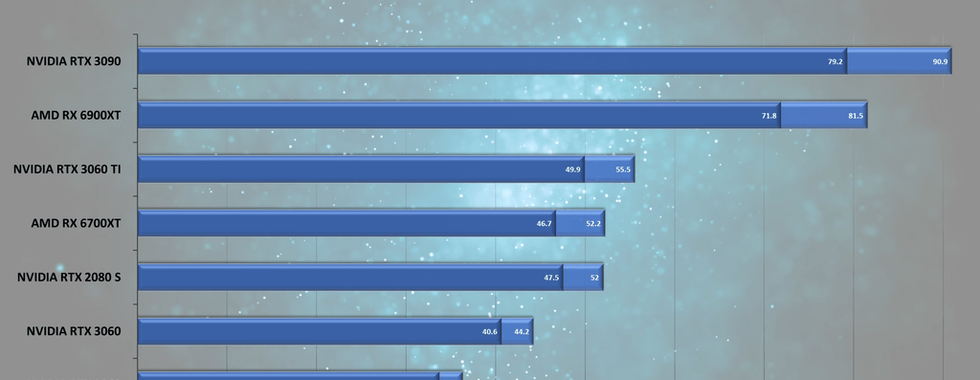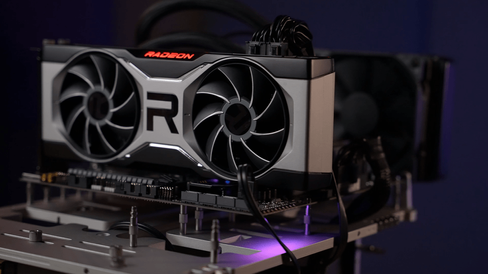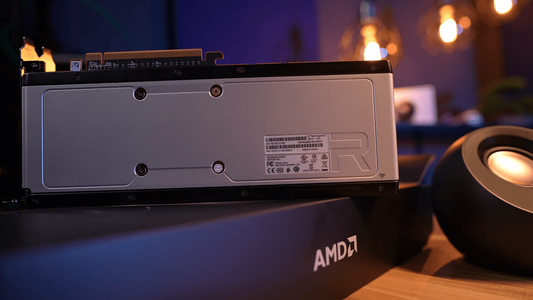AMD Radeon RX 6700 XT - Gamers Should Buy This!
- A2K
- Mar 17, 2021
- 6 min read
Updated: Sep 3, 2023
We are back with another episode about tech that people want but can’t buy! I wonder when these shortages will end? I look back at the beginning of all of this in September and October, there was an immediate shortage followed by scalpers bringing up the prices. I see some of our viewers actually have managed to get cards at retail but it's very few. Then the mining craze came in so prices went up again. Now the final nail in the coffin for our fellow US gamers - tariffs.
Regardless of this all, we must press on and still provide some insights on what kind of performance we can get ignoring the availability issues and pricing, so those, who are looking to buy a card, have good sense on what is reasonable and what is simply unacceptable.
Here we have the latest from AMD - this is Radeon RX 6700 XT. It is targeted at mid range 1440p gaming with a recommended retail price of 479 USD.
Let’s see if it delivers.
Under the hood we have 40 compute units and ray accelerators with a game clock starting at 2424MHz. This card also packs 12GB of GDD6 memory on a 192Bit interface as well as 96MB of Infinity cache that we have seen on the higher-end cards. This cache is used to accelerate the memory to feed the GPU engine. We have covered this in more detail in our Radeon RX 6800XT video - I do recommend checking it out.
Moving on to the card itself, it is a two slot, two fan design which follows the same design as the rest of 6000 series. This card has 230W of total board power so there are 8+6 pin power connectors to feed it. AMD recommends at least a 650W power supply.
On the back we have one HDMI 2.1 and 3 Display 1.4 ports. Overall this card looks and feels like a scaled down version of the high-end ones. I really like the aesthetic and how solid it feels. But the main question is - how does it perform?

For this testing we are using our Ryzen 9 5950X bench to minimise CPU bottleneck and we have lined up a whole range of this and last gen graphics cards.

Jumping into CS:GO, here at 1080p on average there is not much difference in performance. When we look closer at the 1 percentiles both Radeon cards are trailing about 30FPS behind. Not a big deal for most players but may be a deal breaker for competitive gamers that want every bit of performance.
When we up the resolution to 4K, the results shuffle around and now RX 6700XT is taking the lead over the latest NVIDIA cards. To be fair it is also a good bit more expensive.
In Ghost Recon Breakpoint at 1080p this card is about 10% faster than 3060 Ti and is almost matching 6900XT. When we increase resolution to 1440p the difference between high end cards and 6700 XT becomes clear but it is still faster than 3060 Ti by about 10%.
While average frame rate is good for a low refresh rate monitor, unfortunately 1 percentiles are lacking, so unless your monitor supports adaptive sync - you may experience stuttering. In this case I would recommend dropping down the resolution.
In 4K all of the lower-end cards are pretty much unplayable so we can move on to Horizon Zero Dawn. At 1080p besides last gen RTX 2060 - all the rest of the cards are delivering very nice frame rates with good 1 percentile performance. In 1440p RX 6700 XT is on average performing the same as RTX 3060 Ti but has 12% lead on 1 percentiles. And just like the last game - if you want to go up to 4K, then you will certainly need to make some visual sacrifices.
Jumping into results from Shadow of the Tomb Raider - here at 1080p the card falls right between RTX 3060 and RTX 3060 Ti which is a little disappointing considering the price. At 1440p it matches 3060 Ti so at least you have that. AMD does position this card for high refresh rate 1440p gaming and while it lags behind NVIDIA in this title, on average it hits 100FPS.
In 4k we have the usual story so we can pull up the final game - Total War Three Kingdoms. In this title at 1080p both Radeon cards are performing pretty bad in comparison to NVIDIA. In 1440p Radeon is still lagging behind but not as much, and to be honest with any of these more budget cards you could play at 1440p with a low refresh rate monitor. If you are willing to make a few compromises then turn down the settings and you can play with a high refresh rate monitor too. And for the 4k it is the same as all others.
We have run a few tests in 3Dmark and the results are very similar. The one that does stand out is Port Royal which is a Ray Tracing benchmark. Here NVIDIA cards are much more superior and if you intend to play games with ray tracing enabled, then you are basically limited to 1080p, at pretty low settings. I personally believe that ray tracing is still only suitable for the high end, and we need maybe 1 or 2 generations of cards before it can become good at a more budget price point.
Let’s quickly summarize gaming. This card is plenty for anyone playing mainstream e-sports titles at 1080p and 1440p, even with high refresh rate monitors. It can certainly run most triple A games up to 1440p at moderate to high FPS. Overall, I can say it’s pretty reasonable at this price point for rasterized games but weak at ray tracing.
Another place where Radeon cards are lagging behind is professional workloads. We have run Blender benchmarks on all of these cards and in both BMW and Classroom tests RX 6700 XT is slower than RTX 3060 Ti while CUDA is utilised on the NVIDIA card. If we then run it using OPTIX, the difference is even greater, making even RTX 3060 faster.
It is clear that current gen Radeon cards are not really suitable for this kind of work, and unfortunately for some gamers this will also have detrimental effects as these cards fall short of NVIDIA encoder. Individuals who stream or record their games would benefit from NVENC encoder and also NVIDIA shadowplay as these are simply superior products right now.
Another thing that stands out apart from Ray Tracing is DLSS. NVIDIA right now is dominating this and performance in select titles is really impressive. AMD is expected to have something to compete with it, but there are no details yet on what and when.
Next we are checking out temperatures and noise levels and for this we have pushed the card using Furmark to show the worst case scenario.
First, we have the card at idle and just like all recently released cards the RX 6700 XT fans are off.
Here we can measure the room noise-floor which is 37 dBa (ambient temperature +27 C). When we run FurMark to stress the system, the temperatures shoot up and we find the card peaks at 45 dba. It’s audible but not particularly loud.
If you look on the graph here, the temperatures are in the low 80s. After manually changing the fan to full speed, it brought down the temperature to high 60s, but now the card is loud at 59 dBa. I can’t see any reason why the card fans need to be turned up this high unless you are able to store the PC in another room, ideally with sound isolation.
Something else to note - 80 degrees is not hot at all. The cards and more specifically the silicone is designed to be operating at temperatures reaching up to 110 degrees C at any particular hotspot, and I am quoting AMD on this. Personally I would say keep it below 90 and you will be fine.
Overall I am pleasantly surprised at the thermal and acoustic performance of this card. It is basically a scaled down version of the RX 6800 XT and it seems AMD did not cut any corners from their flagship model. And to answer the most important question - if you somehow find it on the shelf, should you buy it?
If you find it at retail price - snatch it up, as just like any card right now, it will probably be the best value card on the market. If on the other hand you are choosing between multiple cards that have their prices hiked - there are a few things to consider. Do you intend to do some professional work or streaming or do want to play games with Ray tracing and also DLSS? If so, then NVIDIA cards would be your best choice.
However if you want a purely gaming card, then RX 6700XT is just that. It has good performance at high end 1080p and 1440p gaming and is even able to push high frame rate for the high refresh rate monitors. Providing the price you are paying is proportional to the NVIDIA offerings then it is great to have an extra chance of scoring a card at this price bracket.
Affiliate disclosure: as an Amazon Associate, we may earn commissions from qualifying purchases from Amazon.






























































Comentários